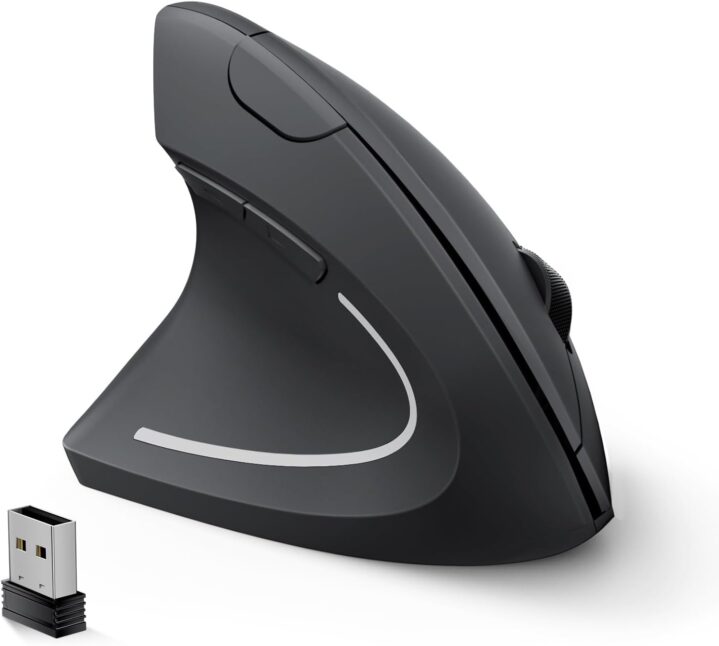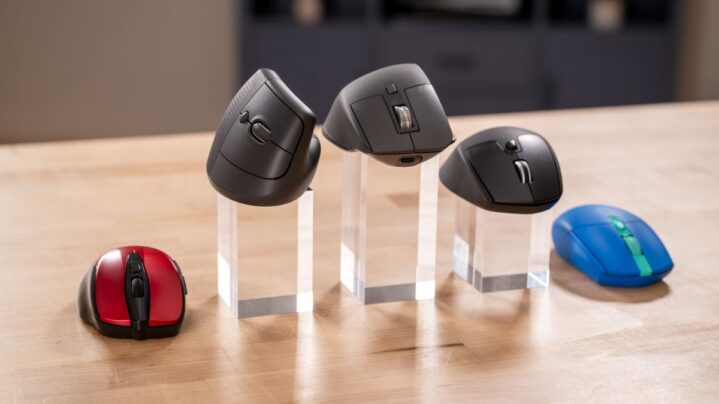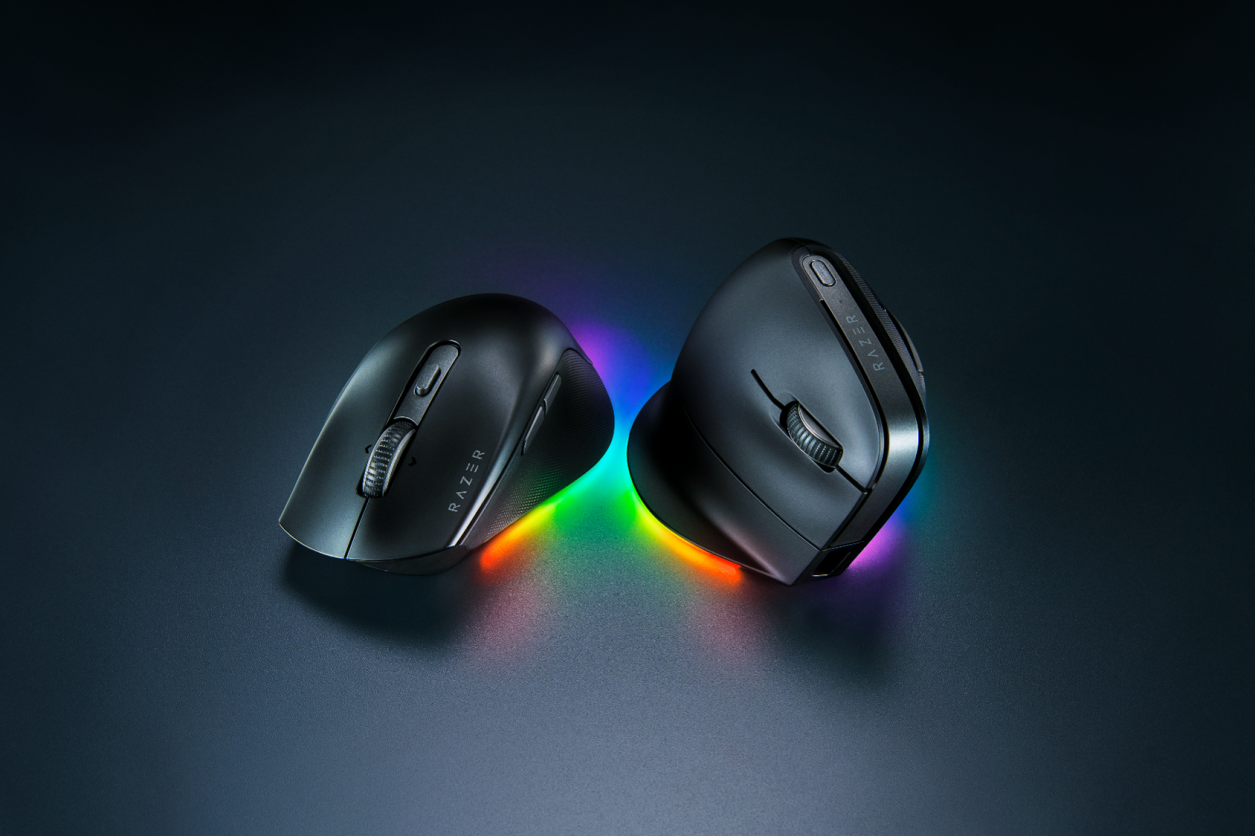Ergonomic mice play an essential role in modern desk setups, helping people work comfortably for long hours without unnecessary strain.
Many traditional mice contribute to wrist pain, carpal tunnel symptoms, shoulder tension, and general fatigue.
Recent advances in 2025 bring sleeker shapes, improved wireless stability, longer battery life, and quieter switches that suit shared workspaces.
Why Ergonomics Matter
Ergonomic mice help create a more natural wrist and forearm posture that reduces tension on joints, nerves, and supporting muscles.
A healthier angle prevents excessive twisting, gripping, and repetitive strain that often builds up during long sessions at a computer.
Vertical models promote a handshake-style posture that lowers pronation and can significantly ease muscular tension in the forearm and shoulder.
Semi-vertical shapes give moderate rotation support, offering comfort for users who prefer a familiar grip.
Trackball devices minimize wrist movement entirely, making them suitable for people dealing with repetitive strain issues or limited mobility.

Many groups gain noticeable benefits once switching to an ergonomic mouse. A few key examples include:
- Office professionals who spend hours navigating documents and spreadsheets
- Students who write, research, and browse for long periods
- Remote workers who rely on portable setups
- Designers who need precise cursor control
- Gamers who perform many rapid movements during extended sessions
For users with small to medium hands (under 19cm), finding a well-fitting vertical mouse can be challenging. The Lekvey Ergonomic Wireless Mouse offers a compact ergonomic design specifically sized for smaller hands, featuring a rechargeable battery, 3 adjustable DPI levels, and 6 programmable buttons to relieve wrist pain during long work sessions.
Check the Lekvey Ergonomic Vertical Mouse on Amazon : https://www.amazon.com/dp/B0FX86VTZ5
Types of Ergonomic Mice
Ergonomic mouse styles cater to different comfort goals and hand movements.
Vertical mice promote a handshake posture that reduces twisting in the forearm and creates a gentler angle for the wrist. Semi-vertical models maintain some traditional feel while relieving strain by elevating the thumb and lowering wrist compression.
Trackball mice remove desk movement and rely on finger-controlled trackballs, which helps reduce repetitive sliding motions.
Ergonomic gaming mice combine comfortable contouring with high-DPI sensors, fast tracking, and customizable buttons to support demanding tasks and long sessions.

Here is a breakdown of these types for clarity:
- Vertical mice: handshake posture with minimal forearm rotation
- Semi-vertical mice: partially raised angle for balanced comfort
- Trackball mice: stationary use with finger-operated control
- Ergonomic gaming mice: shaped for long sessions with precision sensors
Key Buying Factors
Choosing the right ergonomic mouse requires considering several aspects that influence daily use.
Hand size and grip style need attention because every shape fits differently and impacts comfort. For smaller hands (under 19cm), compact vertical designs like the Lekvey Ergonomic Mouse prevent overextension and provide better support.
Adjustable DPI levels provide the ability to fine-tune cursor speed for detailed work or fast navigation. Many models, including the Lekvey vertical mouse, offer 3 adjustable DPI settings to match different tasks.
Button placement and customization help streamline workflows and reduce unnecessary movements.
Weight affects glide and control, while quieter clicks help maintain a peaceful workspace in shared environments.
Battery life, charging method, and connectivity options determine overall ease of use across laptops, desktops, and tablets. Rechargeable designs like the Lekvey ergonomic mouse eliminate battery replacement concerns.

Here are important factors to evaluate:
- Grip style and hand size
- DPI adjustability
- Button layout and customization software
- Weight and surface glide
- Noise level during clicking
- Battery capacity and charging type
- Wireless or wired connectivity options
How to Choose the Right Ergonomic Mouse for You
Selecting an ergonomic mouse that feels comfortable begins with matching personal hand size, grip preference, and daily work habits to the right design.
A device that suits a fingertip grip may feel awkward for someone who prefers a palm grip, so understanding how your hand naturally rests on a mouse helps guide your choice.
Larger hands often benefit from taller or wider designs, while smaller hands may feel more comfortable with compact shapes that avoid overextension of the fingers.
Different designs suit different activity levels and precision needs.
High-precision tasks such as design, editing, or gaming may require adjustable DPI ranges or programmable buttons. Casual browsing or document work may prioritize comfort over rapid response.
People who switch frequently between tasks benefit from customizable buttons, on-the-fly DPI adjustment, or ergonomic gaming options that merge comfort with performance.
Compatibility with Windows, macOS, and tablets influences daily convenience because some devices rely on software for customization.
Certain mice offer full feature sets only when paired with specific operating systems, so choosing a device that aligns with your ecosystem prevents frustration later.
Tablet users may prefer Bluetooth-only models for cleaner setups.

Desk space, travel habits, and budget shape the final decision. Compact trackballs or travel-friendly shapes work well in tight spaces or mobile environments. Full-size ergonomic designs suit stationary setups where comfort takes priority.
Pricing varies widely depending on features, materials, and sensor quality, so identifying must-have features helps refine choices.
Key points to consider when choosing include:
- Your grip style and hand measurements
- Software compatibility with your devices
- Need for portability or a stationary setup
- Budget and intended daily usage patterns
- Preferred sensor type and DPI range
- Button layout for productivity or gaming tasks
Expert Tips for Transitioning to Ergonomic Mice
Adjusting to an ergonomic mouse often involves a short adaptation period because your hand and forearm muscles need time to adjust to a healthier posture.
Slight differences in angle, height, and contour may feel unusual at first, but comfort typically increases after a few days of consistent use. Gradual adoption helps minimize fatigue while encouraging better habits.
Using wrist supports or cushioned pads enhances comfort during extended sessions. These accessories help distribute weight evenly, reducing pressure on joints and keeping your wrist in a neutral position.
Many users also find that a supportive mouse pad with a smooth surface improves glide and reduces strain.
Pairing an ergonomic mouse with an ergonomic keyboard strengthens overall posture by maintaining alignment through the arms and shoulders.
Balanced support prevents unnecessary twisting or reaching, which helps reduce long-term discomfort. Minor posture adjustments, such as raising the chair height or keeping elbows closer to your body can also make a noticeable difference.

Helpful transition strategies include:
- Allowing a few days for muscles to adapt
- Adding wrist-supporting accessories
- Using an ergonomic keyboard to maintain neutral alignment
- Making small posture adjustments during the day
- Taking short breaks to stretch fingers and forearms
- Adjusting sensitivity settings to reduce excessive hand movement
Choosing Comfort That Lasts
Comfort-focused designs contribute to better productivity, healthier posture, and long-term hand wellness.
Prioritizing ergonomic benefits over flashy extras leads to a setup that supports daily tasks without strain.
Hands, wrists, and shoulders feel better when supported by thoughtful design.
